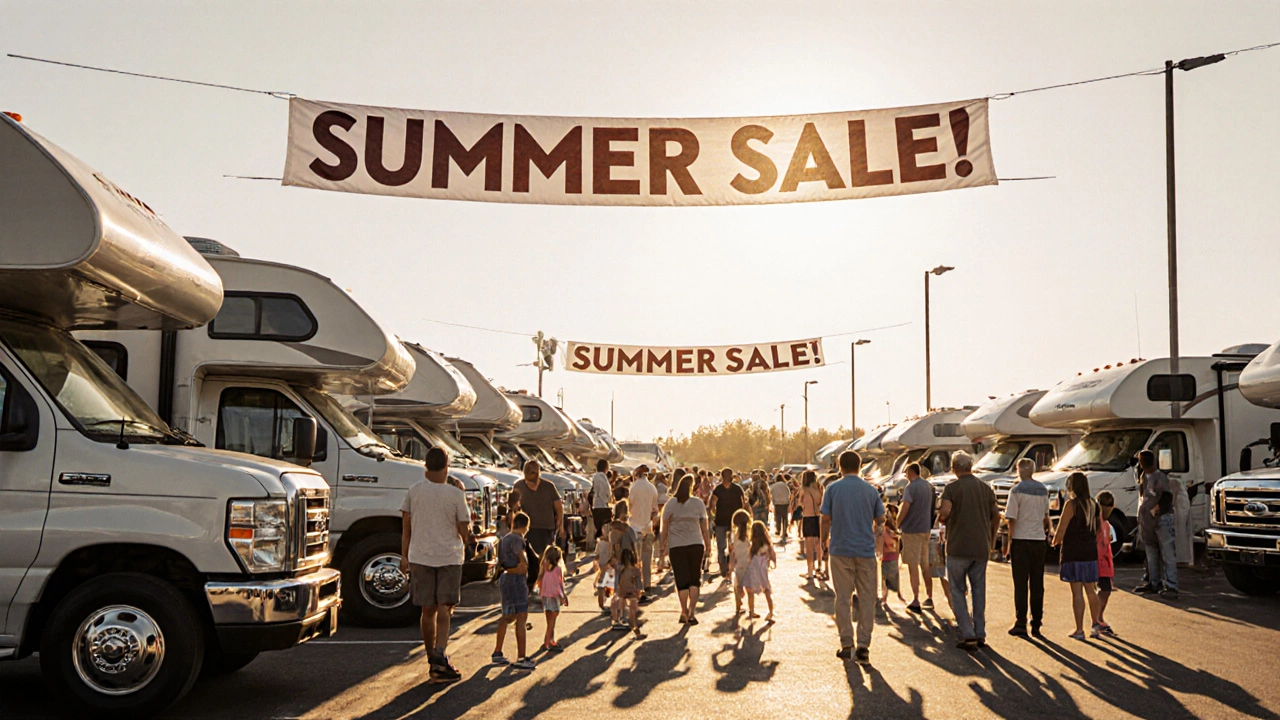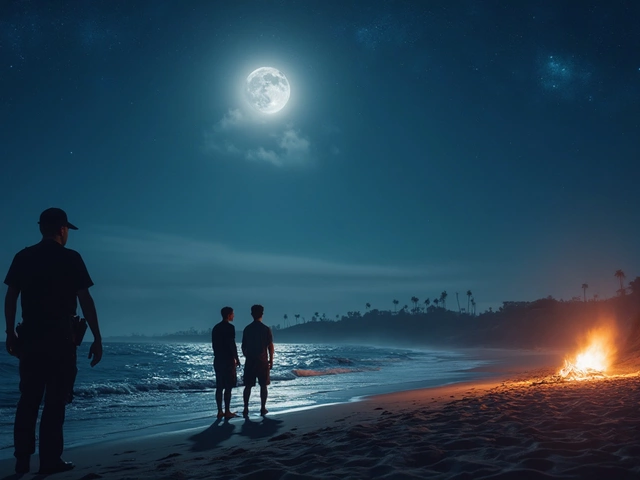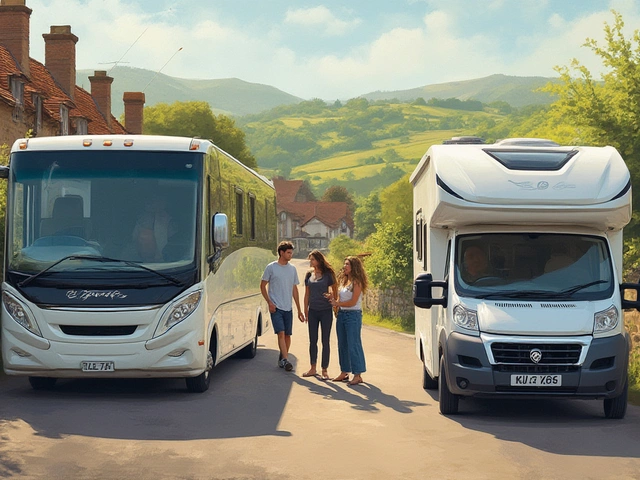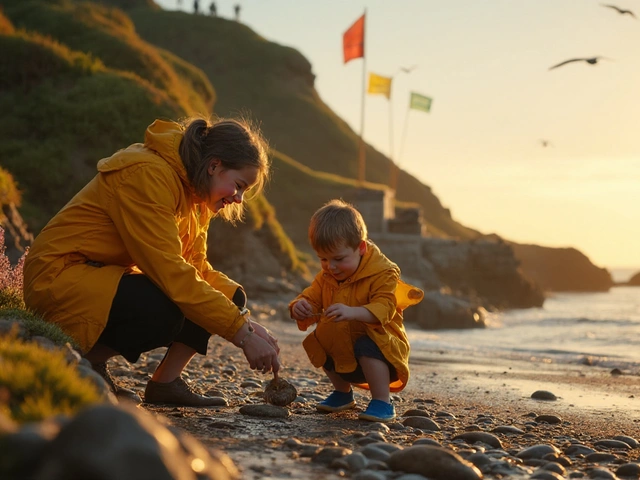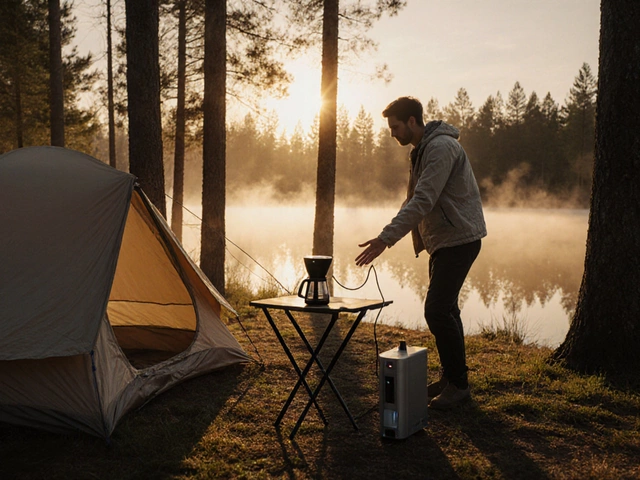Motorhome Savings Calculator
Your Current Motorhome Price
Estimated Savings
Select a price and month to see savings
Buying a motorhome is a big decision. It’s not like picking up a new phone or even a used car. You’re looking at tens of thousands of dollars, long-term maintenance, storage, and how often you’ll actually use it. So why pay full price when you can save thousands by waiting for the right moment?
The worst time to buy a motorhome
If you’re shopping in late spring or early summer-say, between March and June-you’re walking into the peak season. That’s when everyone’s dreaming of summer road trips. Dealerships are busy. Inventory is low. And prices? They’re inflated. Sellers know you’re eager. They don’t need to bargain.
Think about it: if you’re planning a trip to the coast in December, you wouldn’t buy a wetsuit in July. Same logic applies here. The demand spikes right before people want to use the vehicle, and that’s when prices climb the highest.
The sweet spot: late autumn to early winter
The cheapest time to buy a motorhome is between October and January. That’s when the summer crowds have gone home, the weather’s turning cold, and most buyers have already made their purchases. Dealerships still have stock sitting on the lot, and they need to clear it before the new year.
Why? Because motorhome dealers operate on annual sales targets. If they haven’t hit their numbers by November, they’ll start offering discounts, free upgrades, or even covering registration fees just to move units. In Australia, where winter means fewer long-distance trips, the drop in demand is real. Dealers know they won’t sell many units in July or August, so they cut prices to make room for next year’s models.
Real-world example: A 2023 model Jayco Outback sold for $89,000 in May 2024. By December 2024, the same model with the same mileage and features was priced at $74,500-a $14,500 drop in just seven months. That’s not a fluke. That’s standard.
Why dealers drop prices in winter
It’s not just about clearing inventory. It’s about cash flow. Dealers pay interest on every vehicle sitting on their lot. The longer it stays there, the more it costs them. A motorhome sitting unused for six months can cost a dealer over $2,000 in financing and insurance alone.
They’d rather sell it for $70,000 in December than lose $10,000 in holding costs by waiting until March. That’s why you’ll often see ads in October saying “End of Season Clearance” or “Winter Special-Hurry, Limited Stock.”
Also, many dealers receive their new inventory in January. They need to clear out last year’s models before the new ones arrive. That creates a perfect storm: old stock, new models coming in, and pressure to move the old ones fast.
What to look for during off-season deals
Not every discount is a bargain. Here’s what to check before pulling the trigger:
- Service history - Ask for full records. A well-maintained 2022 model is worth more than a neglected 2024.
- Exterior wear - Check for UV damage on the roof, cracks in the sealant around windows, and signs of water leaks inside.
- Engine hours - Unlike cars, motorhomes don’t always show mileage. Ask for engine hours. A unit with under 1,500 hours is ideal for a used buy.
- Flat tires or worn brakes - These are common after long summer trips. Make sure the seller replaced them or reduced the price to cover it.
- Warranty remaining - Some manufacturers offer 3-5 year warranties. If the original buyer only used it for one summer, you might get two years of coverage left.
Don’t be afraid to walk away if the seller won’t let you take it to an independent mechanic. A $500 inspection can save you $5,000 in repairs later.

What about new motorhomes?
New motorhomes are harder to discount, but not impossible. The best time to buy new is in the last two weeks of December. That’s when dealers are trying to hit year-end sales targets and get tax write-offs. Some will even throw in free delivery, a full tank of gas, or a free annual service.
Another trick: look for floor models. These are the units dealers use for showroom displays. They’ve been driven a few hundred kilometers, but they’re brand new inside. You can often get a new model for 15-20% off retail if you’re okay with a few cosmetic marks on the dashboard or a slightly faded curtain.
What months to avoid
Stay away from these periods unless you’re desperate:
- December to February - This is peak holiday season in Australia. Families are buying for Christmas trips. Prices rise, and inventory vanishes.
- March to May - The start of the camping season. People are planning their summer adventures. Dealers raise prices knowing you’re in a hurry.
- Public holidays - Long weekends like Easter, Australia Day, or Labour Day often see temporary price hikes. Dealers know people have time off and are browsing.
How much can you really save?
On average, buyers who wait until November to January save between 12% and 22% off the sticker price. For a $100,000 motorhome, that’s $12,000 to $22,000. That’s enough to cover a year’s worth of fuel, campsites, and maintenance.
One buyer in Adelaide bought a 2022 Winnebago Navion in January 2025 for $78,000. The same model was listed at $96,000 in September 2024. He saved $18,000-and got a free roof sealant treatment and two years of roadside assistance.
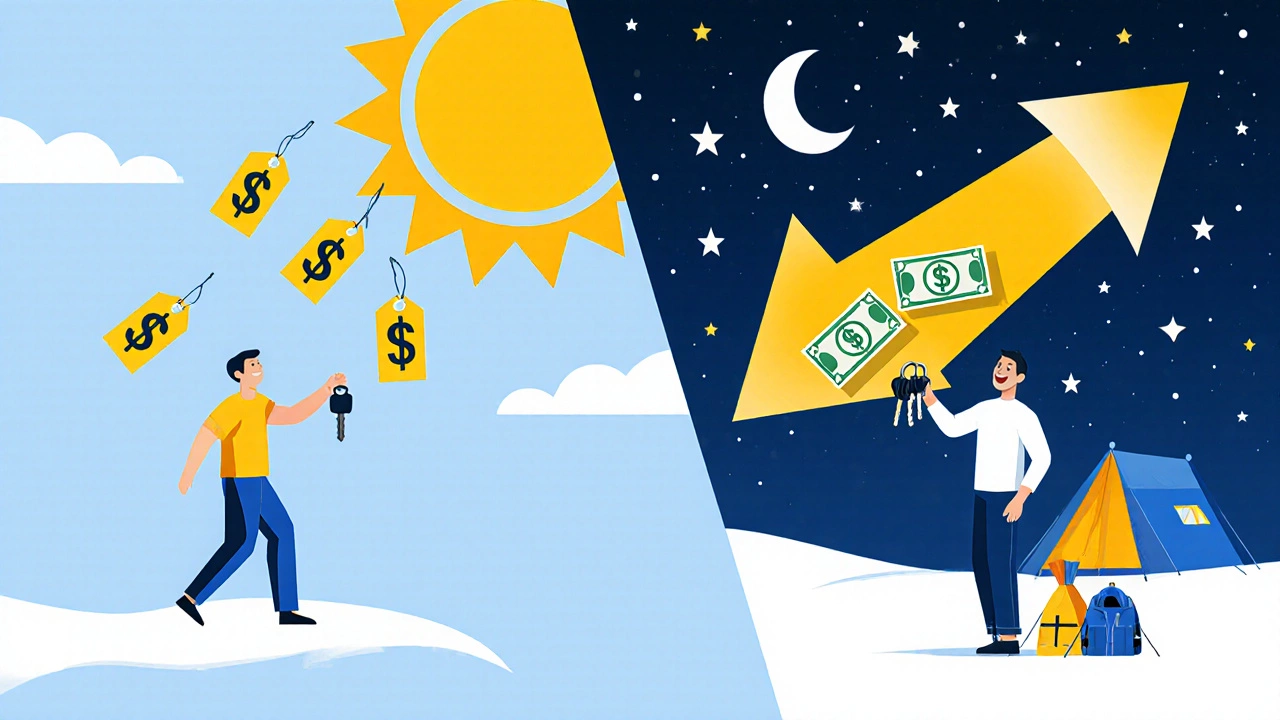
Pro tip: Get on dealer email lists
Don’t wait for ads in the paper. Sign up for newsletters from at least five local dealerships. Most send out weekly deals, especially in October and November. You’ll get alerts about:
- Trade-in promotions
- End-of-month clearance events
- Special financing rates (0% for 12 months)
Some dealers even give first access to new stock to their email subscribers. That means you could buy a brand-new model before it hits the showroom floor.
Final advice: Don’t rush, but don’t wait too long
Waiting until January is smart. But waiting until February? You might miss out. Once the weather warms up and people start planning their trips, the deals disappear. The best window is late October through mid-January.
Start looking in October. Test drive a few models. Compare prices. Talk to owners on motorhome forums. Know what you want before you walk into a dealership. That way, when the discount hits, you’re ready to say yes.
Remember: the cheapest motorhome isn’t the one with the lowest price tag. It’s the one you buy at the right time, with the right condition, and without regret.
Is it better to buy a used or new motorhome in the off-season?
Used motorhomes offer the biggest savings in the off-season-often 15-25% off retail. New models can also be discounted, especially floor models or last year’s designs, but the savings are usually smaller (10-20%). If you want maximum value and don’t mind a few miles on the odometer, go used. If you want a warranty and the latest tech, new might be worth the extra cost.
Can I negotiate the price of a motorhome in winter?
Yes, and you should. Dealers expect it during off-season months. Start by asking if they can match a lower price you found elsewhere. Mention the cost of holding inventory. Many will throw in extras like a free tow bar, solar panel, or extended warranty just to close the deal. Don’t be shy-negotiation is part of the process.
Are motorhome prices lower in regional areas?
Sometimes. Dealers in smaller towns or rural areas have less competition and fewer buyers, so they may offer better deals to move stock. But you’ll have fewer options. Big cities like Sydney or Melbourne have more inventory and more competition, which often leads to better pricing overall. Weigh convenience against savings.
What’s the best way to find motorhome deals in Australia?
Check online marketplaces like Carsales, Gumtree, and Motorhome Depot. Join Facebook groups like "Australian Motorhome Buyers" or "RV Swap Australia"-owners often sell directly there at lower prices. Also, attend local RV shows in late October. Dealers bring their best deals to these events to attract buyers before the holiday rush.
Do motorhome prices drop after Christmas?
Yes, but only if the dealer hasn’t already sold their stock. The biggest price drops happen in November and early December. After Christmas, inventory shrinks quickly. By mid-January, most of the good deals are gone. If you’re still looking after Christmas, you’ll have fewer choices, not better prices.
Next steps: What to do now
If you’re serious about buying a motorhome this year, here’s what to do before the end of November:
- Set your budget and stick to it. Include insurance, registration, and storage.
- Make a list of must-have features: sleeping space, bathroom, kitchen size, towing capacity.
- Sign up for email alerts from at least three dealerships.
- Visit two or three dealerships in person. Test drive the same model on different days to compare.
- Ask about trade-in value for your current vehicle-even if it’s not a motorhome.
By the time January rolls around, you’ll be ready. And you’ll be the one who saved the money-while everyone else is paying full price for summer dreams.
